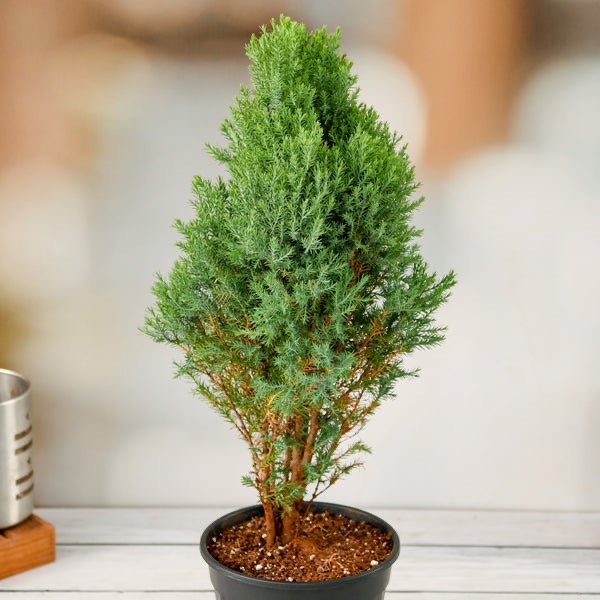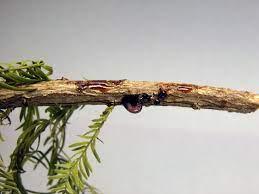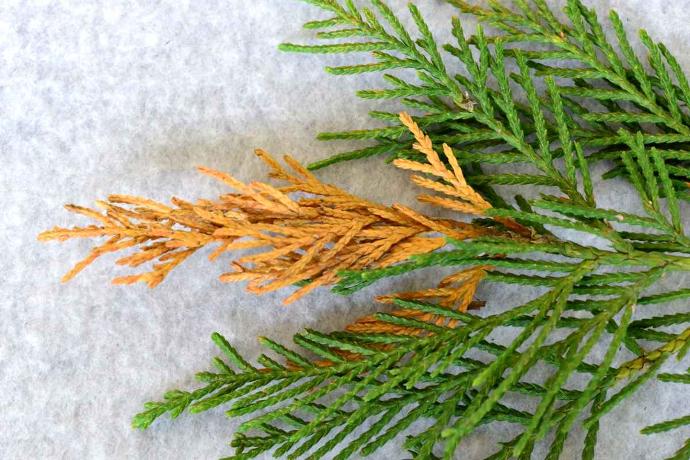Thai cypress Plant
THAI CYPRESS, possibly referring to a specific plant variety or species, may have varying care requirements. Generally, provide well-draining soil, appropriate sunlight, and regular watering. Pruning and fertilizing practices may vary based on the specific characteristics of this plant.
Habit
Shrub
Height
6 to 8 m
Growth
Moderate
Soil
Well-drained, Sandy Loam
Shade
Full Sun to partial shade
Moisture
Moist
Edible
No
Medicinal
No
Origin
Southeast Asia
Climatic Condition
Tropical, Subtropical
Temperature (°)
20°C to 30°C
Humidity (%)
60% to 70%
Potting media
50% Loam, 40% Sand, 10% Compost
Fertilizers
Organic Fertilizer
Watering
Regular watering
Plant Weight
5 to 10 kg
Flowering Time
Spring to Summer
Soil Ph level
6.0 to 7.0
Water Ph level
6.0 to 7.5
Soil EC
0.5 to 0.8 mS/cm
Yield Per Plant
30 to 50 kg per plant
NPK ratio
10:10:10
life Span
20 to 40 years
Health Benefits
Ornamental, Wood Production
Suggested Grow Media or Potting Mix ?
40% peat moss, 30% compost, 30% perlite
Suggested Fertigation/Fertilizers
Fertilize every 4 weeks with a balanced, water-soluble fertilizer.
Common Diseases and Remedies
Cypress canker.
This interferes with the vascular system of the tree and eventually causes death above.
Organic remedy-Prune out and destroy as soon as possible. Make pruning cuts 3 to 4 inches below diseased tissue . Apply water at the base of trees to keep branches dry and reduce disease spread.
HEALTH BENEFITS
1. Antioxidant properties: Thai cypress contains antioxidants that can help protect against oxidative stress and inflammation.
2. May help reduce inflammation: The antioxidants and other compounds in Thai cypress may help reduce inflammation and improve overall health.
3. May help improve cardiovascular health: Thai cypress's antioxidants and other compounds may also help improve cardiovascular health and reduce the risk of heart disease.
What Is Thai Cypress Plant?
The Thai cypress plant, also known as Cupressus Sempervirens 'Bonsai', is a cultivar of the Mediterranean cypress tree. It's a compact, slow-growing evergreen tree with aromatic foliage. It's often used in landscaping and as a bonsai specimen due to its graceful appearance and ease of care.
What Are Different Types Of Thai Cypress Plant?
1. Hinoki Cypress (Chamaecyparis obtusa):
Native to Japan, the Hinoki cypress is widely cultivated in Thailand and other Asian countries for its graceful, pyramidal form and aromatic, dark green foliage.
2. Chinese Swamp Cypress (Glyptostrobus pensilis):
Also known as the Chinese water pine, this deciduous cypress species is native to China and Vietnam but is grown in Thailand as an ornamental tree. It has attractive, soft, needle-like foliage that turns bronze-orange in the fall.
3. Italian Cypress (Cupressus sempervirens):
While not native to Thailand, the Italian cypress is commonly planted in landscapes and gardens throughout the country for its tall, slender form and evergreen foliage.
4. Japanese Cedar (Cryptomeria japonica):
Although not a true cypress, the Japanese cedar is often grouped with cypress trees. It is native to Japan and is cultivated in Thailand for its soft, aromatic foliage and attractive conical shape.
How do you care for Thai cypress?
Location
Cypress trees, including those commonly cultivated in Thailand, generally grow in locations with specific environmental conditions.
Most cypress trees prefer warm, temperate climates. It usually grows best in areas with mild winters and warm summers. However, some species, such as the sagebrush, tolerate moist conditions and can even grow in wet or waterlogged soils.
Sunlight
The amount of sunlight required by Thai cypress plants varies depending on the specific species and environmental conditions.
Soil
The ideal soil for Thai cypress plants should have good drainage while retaining sufficient moisture.Good drainage Thai cypress cannot tolerate waterlogged soil, so a soil mix that drains excess water quickly. It is important to use Well-drained sandy loam or loamy soils are ideal.
Hydration
The hydration needs of Thai cypress plants vary depending on factors such as climate, soil conditions, and the plant's stage of growth. 
Nourishment
In addition to the primary macronutrients (nitrogen, phosphorus, and potassium), Thai cypress plants may benefit from micronutrients like iron, magnesium, and manganese.
Issues
Cypress plants may be susceptible to pests such as aphids, spider mites, scale insects, and cypress moths. Cypress plants can be susceptible to fungal diseases such as root rot, canker, and needle rot, especially in humid conditions.
What Are The Benefits Of The Thai Cypress Plant?
1. *Ornamental Value:* Thai cypress is prized for its attractive leaves that vary in color, texture, and shape depending on the species and variety. It can add beauty and visual interest to gardens, landscapes, and interiors.
2. *Privacy Screen:* The tall, dense cypress species can be used as a natural privacy screen or windbreak to ensure privacy and block unwanted views into residential or commercial environments.
3. *Air Purification:* Like many other plants, cypress trees improve air quality by absorbing carbon dioxide and releasing oxygen during photosynthesis. It also filters pollutants and particulate matter from the air, contributing to cleaner, healthier indoor and outdoor environments.
4. *Wildlife Habitat:* Cypress trees provide habitat and food sources for a variety of wildlife species, including birds, insects, and small mammals. These contribute to biodiversity and ecosystem health by supporting wildlife populations and promoting ecosystem balance.
5.*Erosion Control:* Cypress trees stabilize soil and help prevent erosion in riparian areas, wetlands, and coastal areas. The extensive root system anchors the soil and reduces the risk of water runoff and wind erosion.
FAQs About Growing Thai Cypress
How to care for Thai cypress?
1. Water
2. Sunlight
3. Soil:
4. Fertilization
5. Pruning
6. Mulching
7. Pest and Disease Management
8. Protection from harsh conditions
What is Thai cypress used for?
1. Ornamental purposes
2. Privacy Screens
3. Topiary and hedges
4. Aromatic properties
5. Wood and wood products
6. Wildlife Habitat


